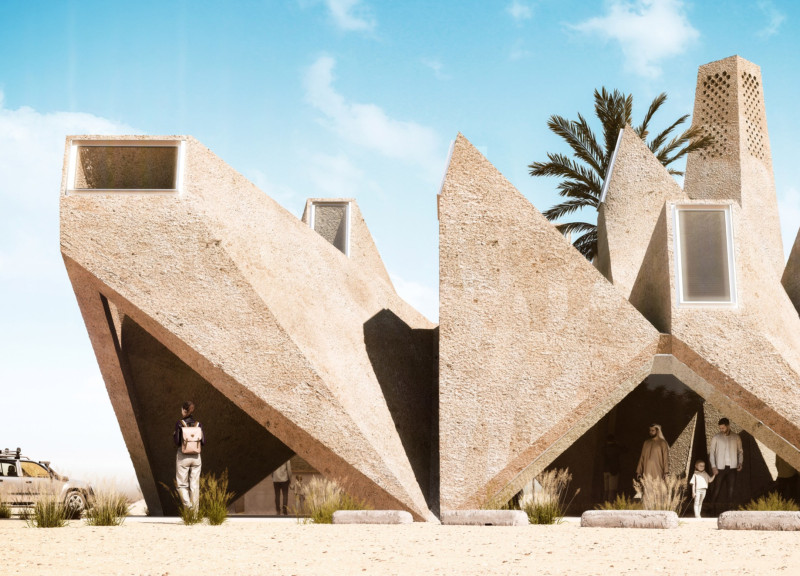5 key facts about this project
The center is characterized by its distinctive architectural form, created from 32 trapezoidal precast concrete units. These units are uniquely arranged to form a roof that mimics the natural topography, fostering an organic connection between the built and natural environments. The geometric design not only serves aesthetic purposes but also incorporates functional aspects such as natural ventilation and daylighting, reducing reliance on artificial lighting and climate control.
Unique Design Approaches
One major aspect that sets this project apart is its emphasis on sustainability. The design features a wind tower that enhances natural airflow within the building, minimizing energy usage for cooling. This approach reflects a broader commitment to environmental sustainability inherent in the project.
Additionally, the thoughtful orientation of the building takes into consideration solar angles to provide adequate shading and reduce heat gain. The use of materials such as precast concrete and glass plays a crucial role in achieving both durability and aesthetic appeal, creating a visual dialogue with the surrounding landscape.
Interior spaces are carefully organized around a central courtyard, promoting movement and interaction among visitors. Facilities include exhibition areas, a café, and a gift shop, all designed for accessibility and comfort. The integration of natural elements, alongside strategically placed openings for light and views, fosters a welcoming environment that enhances the overall visitor experience.
Technical Considerations and Material Use
The structural integrity of the Abu Dhabi Flamingo Visitor Center is primarily derived from prefabricated precast concrete, which ensures efficiency in construction. Additionally, the use of ceramic tiles for interior finishes adds textural contrast while maintaining a connection to local materials.
This project exemplifies a thoughtful response to climate conditions and the ecological context of the reserve. The architecture not only facilitates human interaction with nature but also serves to educate the public about the importance of biodiversity.
For professionals interested in architectural details, further exploration of the project’s architectural plans, sections, and design ideas is encouraged to obtain a comprehensive understanding of its innovative approaches and functional layout.


























